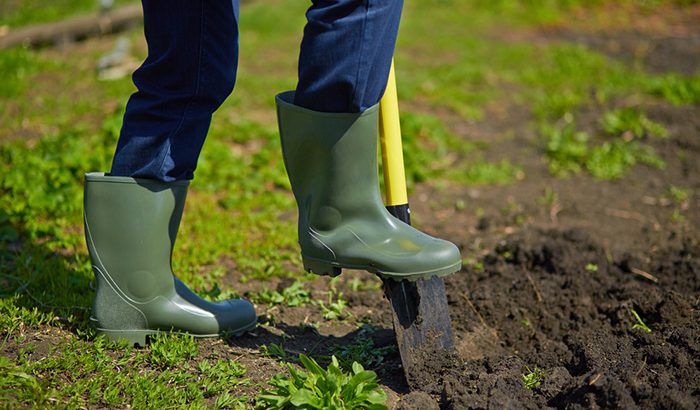With autumn now stretching well into November and – weather dependent – possibly December, and winters getting milder and wetter, the jobs to be done to winterise your garden are changing. Waterlogging and strong wintery gales are more likely to be the problem, rather than snow or soil frozen solid.
Constant heavy rain can kill plants such as lavender, rosemary, summer flowering bulbs and alpines that can normally survive a cold winter, without any problems simply because of waterlogging. To prevent this, grow plants that need good drainage in pots or in a raised bed.
To prevent compaction, which will cause you problems in summer, stay off the lawn as much as possible when ground conditions are wet. This doesn’t mean you ignore it. You must rake up and remove fallen leaves. If there is only a small amount, compost them, if there is a large amount, bag them and make leafmould. If leaves cover the grass for weeks, they starve it of light and it may develop a fungal disease or leave bare patches. Grass still grows in winter, so cut your lawn at least once a month with blades set a notch or two higher than usual. This will keep it from getting long and falling down on itself.
Winds
Strong winds are a problem in all but the most sheltered gardens. If you have a fence with wooden posts, check the bases of them for rot, replacing them now may save you having to replace half your fence, plus whatever of it that breaks during high winds.
Check latches and hinges on gates and shed doors, replacing where needed. Check the ties and stakes on newly planted trees, they are there to stop the tree moving in the wind. Remove after 2-3 years. After strong winds, check newly planted shrubs, as they may have lifted slightly out of their planting hole with windrock.
All planted pots should be raised off the ground using pot feet (bricks or just pieces of timber). This prevents waterlogging and also freezing as air can circulate around it. Large pots that are top heavy with shrubs must be secured to something solid like a fence or wall. Even though our climate is changing to milder, wet winters, you must still prepare for frost.
Draw, roll up and store your garden hose. Outside taps must be lagged. Use bubble wrap, this is the easiest way to prevent it freezing as it is both waterproof and insulating.
Feeding
Continue feeding garden birds, but you can supplement the usual food with bird pudding. This is made by melting lard or dripping and adding breakfast cereal, uncooked porridge oats, crushed peanut butter, seeds and grated cheese. Any or all of the above will do. When set hard, turn out in a solid mass on a bird table or pack into a small flower pot and hang upside down. Always have clean, fresh water available for birds.


 Paul Gargan
Paul Gargan
